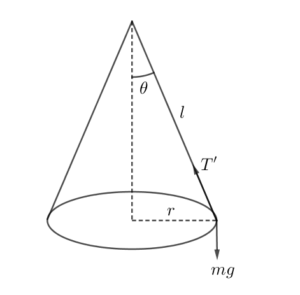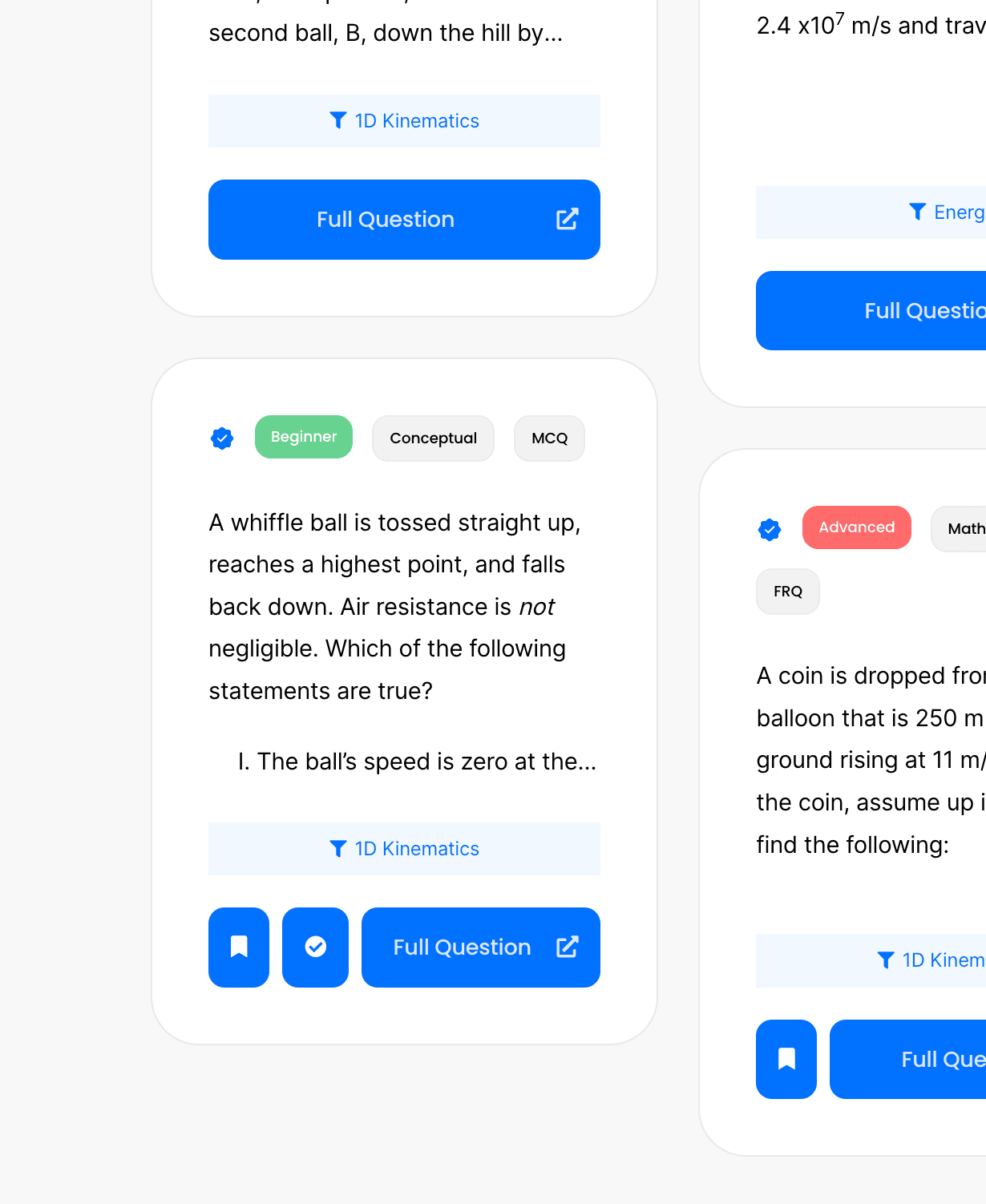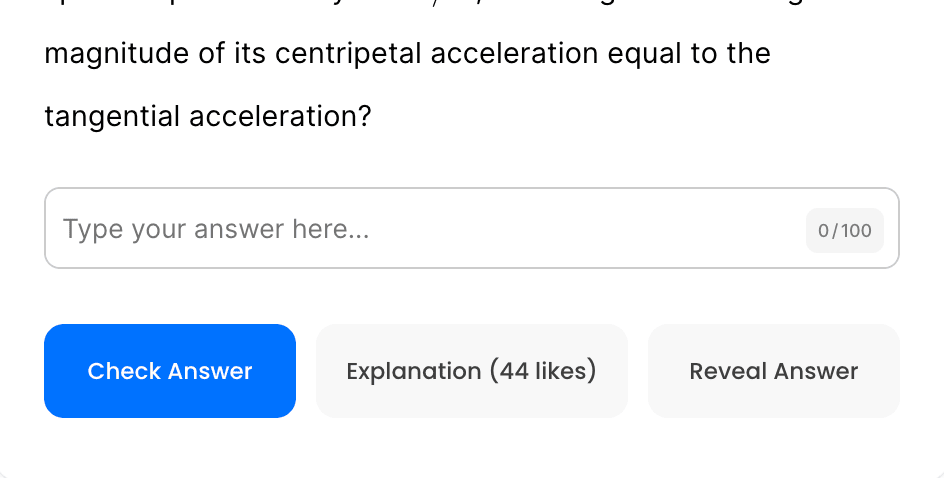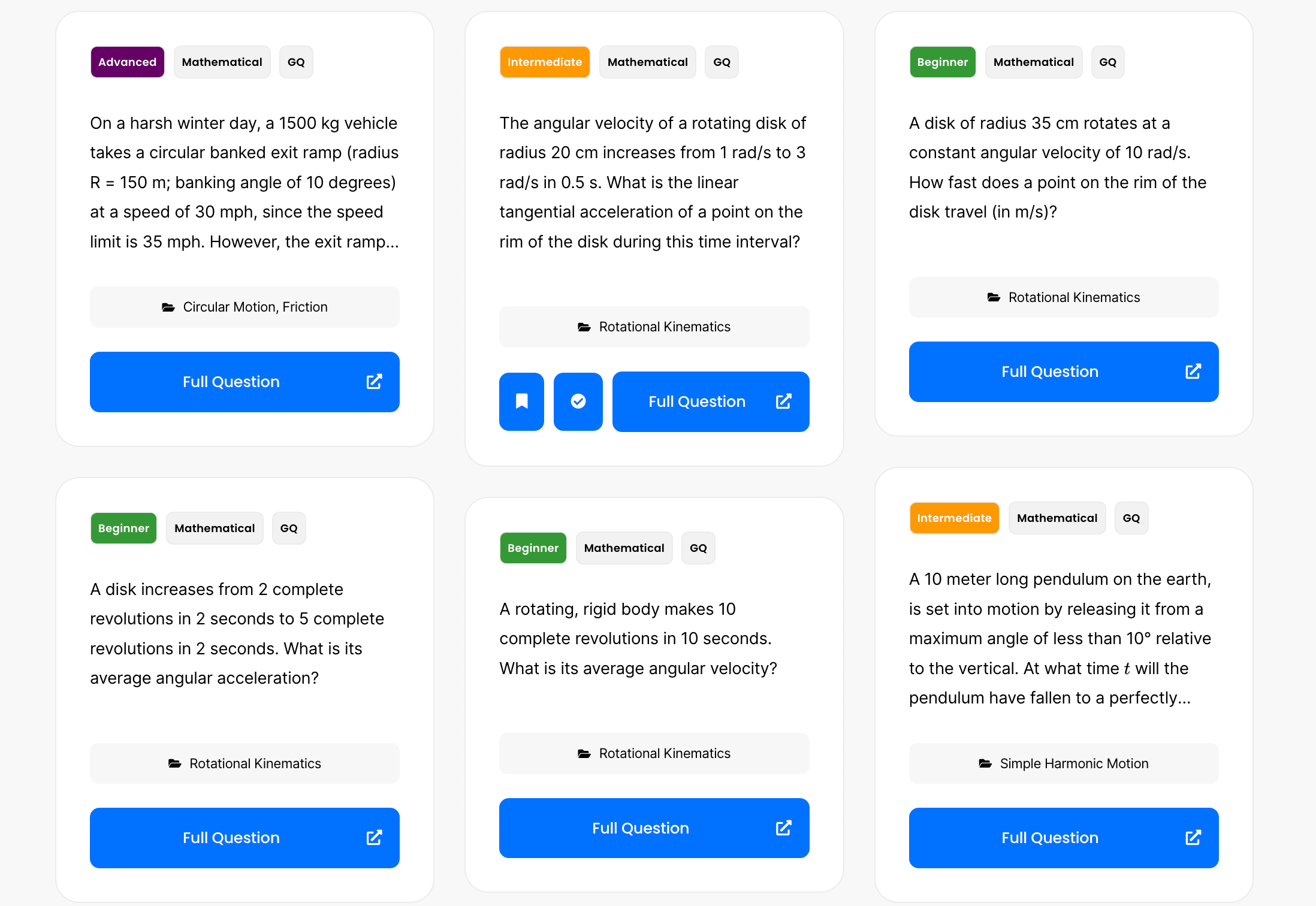A disk, a hoop, and a solid sphere are released at the same time at the top of an inclined plane. They are all uniform and roll without slipping. In what order do they reach the bottom?
\( \text{Solid sphere: } I = \frac{2}{5}mR^2, \quad \text{Solid disk: } I = \frac{1}{2}mR^2, \quad \text{Hoop: } I = mR^2 \)
Two students are on a balcony 19.6 m above the street. One student throws a ball vertically downward at 14.7 m/s. At the same instant, the other student throws a ball vertically upward at the same speed. The second ball just misses the balcony on the way down.
A 2.0 kg wood box slides down a vertical wood wall while you push on it at a 45 ° angle. The coefficient of kinetic friction of wood µk = 0.200. What magnitude of force should you apply to cause the box to slide down at a constant speed?
A pendulum with a period of \( 1 \) \( \text{s} \) on Earth, where the acceleration due to gravity is \( g \), is taken to another planet, where its period is \( 2 \) \( \text{s} \). The acceleration due to gravity on the other planet is most nearly
A boat can row across a still \( 1 \, \text{km} \) wide river at a maximum speed of \( 5 \, \text{km/hr} \). If a current of \( 4 \, \text{km/hr} \) flows east as you try to directly cross the river, how long would it take?

The radius of the left piston is \( 0.12 \) \( \text{m} \) and the radius of the right piston is \( 0.65 \) \( \text{m} \). If \( f \) were raised by \( 14 \) \( \text{N} \), how much would \( F \) need to be increased to maintain equilibrium?
A rocket is fired at a speed of 75.0 m/s from ground level, at an angle of 60.0° above the horizontal. The rocket is fired toward an 11.0-m-high wall, which is located 27.0 m away. The rocket attains its launch speed in a negligibly short period of time, after which its engines shut down and the rocket coasts. By how much does the rocket clear the top of the wall?

A conical pendulum is formed by attaching a ball of mass \( m \) to a string of length \( \ell \), then allowing the ball to move in a horizontal circle of radius \( r \). The following figure shows that the string traces out the surface of a cone, hence the name.
A cube of side length \( s \) rests on the bottom surface of a container of fluid. The fluid is at a height \( y \) above the bottom of the tank. The fluid has density \( \rho \) and the atmospheric pressure is \( P_{\text{atm}} \).
Which of the following expressions is equal to the absolute pressure exerted by the fluid on the top surface of the cube?

A ball of mass \( 0.5 \, \text{kg} \), initially at rest, is kicked directly toward a fence from a point \( 32 \, \text{m} \) away, as shown above. The velocity of the ball as it leaves the kicker’s foot is \( 20 \, \text{m/s} \) at an angle of \( 37^\circ \) above the horizontal. The top of the fence is \( 2.5 \, \text{m} \) high. The ball hits nothing while in flight and air resistance is negligible.
An object is thrown upward at \( 65 \, \text{m/s} \) from the top of a \( 800 \, \text{m} \) tall building.
A curve with a radius of \( 125 \) \( \text{m} \) is properly banked for a car traveling \( 40 \) \( \text{m/s} \). What must be the coefficient of static friction \( (\mu_s) \) for a car not to skid on the same curve when traveling at \( 53 \) \( \text{m/s} \)?
By continuing you (1) agree to our Terms of Sale and Terms of Use and (2) consent to sharing your IP and browser information used by this site’s security protocols as outlined in our Privacy Policy.
Quick Start Guide
AP physics 1, AP C, honors and advanced physics students.
Quickly filter questions by units and more.


Here’s guide to using 5 UBQ filters.
GQ = general question, MCQ = multiple choice, FRQ = free response.


Click the check or bookmark button.
Now you’ll be able to see completed or bookmarked questions at a glance!
Answer keys, personalized for you.

Phy will be responsible for grading your FRQs and GQs.
No more copy and pasting. Just solve and snap.
Questions for Mastery

By continuing you agree to nerd-notes.com Terms of Service, Privacy Policy, and our usage of user data.